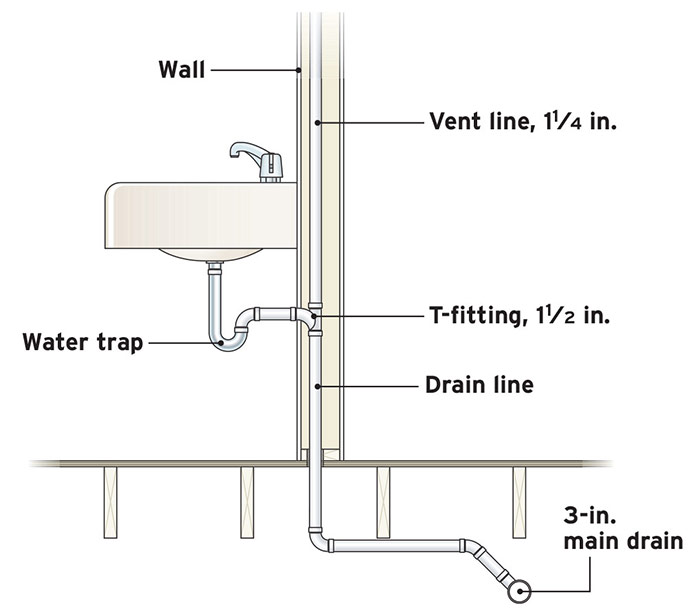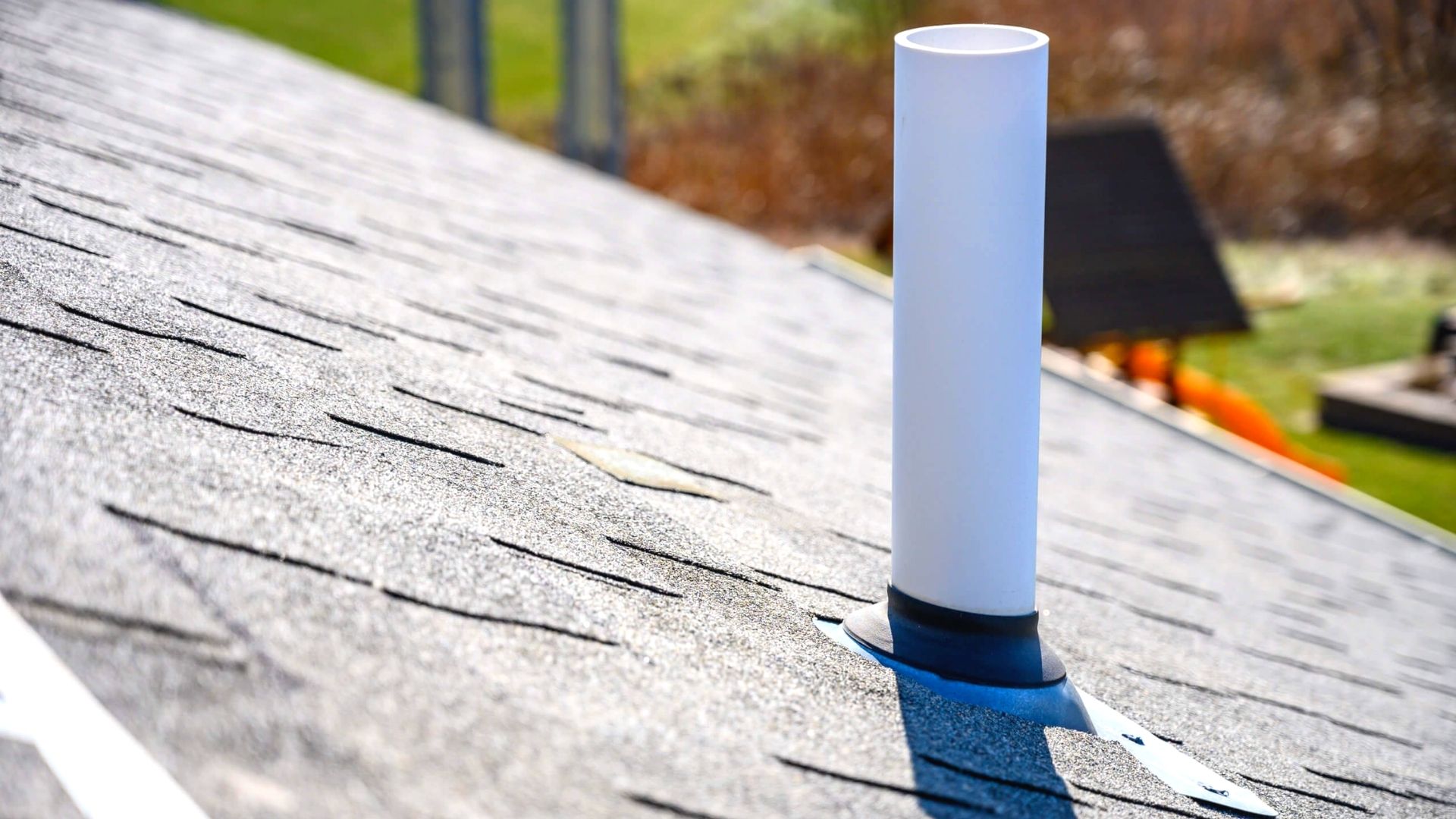Grasping The Importance of Correct Ventilation in Plumbing Systems
Grasping The Importance of Correct Ventilation in Plumbing Systems
Blog Article
What are your ideas on Essential Plumbing Vent Pipes: Understanding Their Role?

Appropriate ventilation in pipes systems is typically overlooked, yet it is vital for maintaining the performance and safety of your home's plumbing. Ventilation assists manage air pressure, stop the build-up of harmful gases, and make certain the efficient removal of waste. In this guide, we will check out the importance of appropriate plumbing ventilation, exactly how it works, and the benefits it gives your plumbing system.
Recognizing Ventilation in Pipes
Ventilation in plumbing describes the network of pipes that permit air to flow via the drainage system. These vents serve numerous purposes, including managing air pressure within the pipes, protecting against sewer gases from going into the home, and helping in the smooth circulation of wastewater.
Just How Air Flow Works in Pipes Systems
Atmospheric Pressure Policy
Appropriate ventilation preserves well balanced air pressure within the plumbing system. When water streams through pipelines, it displaces air. Without sufficient air flow, this displacement can produce negative stress, causing reduce drains or siphoning of water from catches, which can cause unpleasant smells to seep into the home.
Protecting Against Sewer Gas Buildup
One of one of the most critical functions of plumbing vents is to avoid drain gases, such as methane and hydrogen sulfide, from accumulating within the home. These gases can posture severe health threats and are extremely flammable. Vent pipes permit these gases to get away safely outdoors.
Aiding in Waste Removal
Air flow helps in the reliable elimination of wastewater by avoiding airlocks in the drainage system. When air can stream freely via the vents, it permits water and waste to flow smoothly via the pipelines, reducing the threat of obstructions and back-ups.
Kinds Of Plumbing Vents
Main Stack Vent
The major pile vent, also known as the air vent pile, is the key vent in a plumbing system. It expands from the primary drainpipe line up through the roofing system, enabling gases to get away and fresh air to get in the system.
Branch Vent
Branch vents connect to the main stack vent and serve individual components, such as sinks, commodes, and showers. These vents ensure that each component has adequate ventilation to operate effectively.
Air Admittance Valve (AAV).
An Air Admission Shutoff (AAV) is a one-way valve that allows air to enter the plumbing system without the demand for a traditional air vent pipe extending via the roofing system. AAVs are typically utilized in renovations or areas where setting up a typical air vent is impractical.
Signs of Poor Air Flow in Plumbing.
Slow Draining Fixtures.
If your sinks, tubs, or toilets are draining slowly, maybe an indication of poor air flow. Insufficient air flow can create a vacuum result, making it tough for water to drain appropriately.
Gurgling Seems.
Gurgling audios coming from drains pipes are usually a result of air being sucked through water traps due to negative pressure in the pipelines. This is a clear indicator of insufficient air flow.
Undesirable Odors.
Sewer odors inside your home are a warning that your pipes system is not properly ventilated. This might indicate that sewage system gases are not being sufficiently aired vent outside, leading to potentially dangerous conditions.
Common Ventilation Errors.
Insufficient Vent Sizing.
Utilizing undersized air vent pipelines can cause bad air flow and pressure imbalances in the system. It's necessary to use vents that fulfill the certain demands of your plumbing system.
Improper Vent Placement.
Putting vents as well much from the fixtures they offer can minimize their efficiency. Proper placement ensures that air can stream easily and effectively with the system.
Disregarding Code Requirements.
Building regulations offer particular guidelines for pipes ventilation. Disregarding these codes can result in a system that falls short to work correctly and might bring about costly repairs or carcinogen.
Benefits of Proper Ventilation.
Improved System Performance.
Correctly aerated plumbing systems operate a lot more successfully, with fewer clogs, faster draining, and less pressure on the pipelines. This effectiveness expands the life-span of the pipes system.
Improved Air Top Quality.
By avoiding drain gases from entering your home, proper air flow adds to better interior air top quality, making your living atmosphere healthier and extra comfortable.
Avoiding Water Damage.
Ample ventilation aids protect against water from being siphoned out of traps, which can bring about drain gases getting in the home and creating water damage gradually.
Steps to Guarantee Appropriate Air Flow.
Consulting Pipes Codes.
Constantly consult regional plumbing codes when developing or changing your pipes system. These codes give the essential guidelines for appropriate venting and ensure your system meets security requirements.
Regular Evaluation and Upkeep.
Normal inspections can aid identify potential air flow issues before they come to be significant troubles. Upkeep jobs, such as cleaning up air vent pipelines and looking for blockages, are vital for maintaining the system in good working order.
Specialist Setup.
For new installments or major adjustments, it's a good idea to work with a professional plumbing technician. They have the expertise to ensure the air flow system is correctly created and mounted according to code.
Verdict.
Appropriate ventilation is a vital element of any kind of plumbing system, guaranteeing that it works effectively and safely. By recognizing the value of air flow, acknowledging the signs of bad air flow, and taking actions to maintain your system, you can prevent pricey concerns and shield your home's air quality.
4 Things You Should Know About Your Plumbing Vents
What Plumbing Vents Are
Also called a vent stack, a plumbing vent is a vertical pipe attached to your drain line that runs through your roof. The plumbing vent pipe, or plumbing air vent, removes gas and odors from your plumbing system and allows fresh air to enter the pipes, helping the water to flow out of the drain pipes.
What Plumbing Vents Do
Plumbing vents have two basic functions. One of which is to allow unpleasant smelling wastewater and sewer gasses to escape your plumbing system instead of entering your home. Plumbing vent pipes are typically located on roofs, away from windows, to ensure the fumes exit the home completely.
The other function of the plumbing vent is to move fresh air into your plumbing system. This helps move water through every plumbing fixture in your house, like toilets and sink drains. Think of the way in which you need to let a little air into the bottle as you pour soda in order to make the drink flow smoothly.
Different Types of Plumbing Vents
True vent: This is the most common vent option. In simplest terms, a true vent is a vertical pipe attached to your drain line that exits through the roof. They often function as the main vent that other fixtures can connect to. Re-vent pipe or auxiliary vent: Attached to the drain line near specific plumbing fixtures, re-vent pipes run up and over to connect to the main vent. Common vent: Two plumbing fixtures installed on opposite sides of a wall are typically tied into the vent stack using something known as a sanitary cross. Wet vent: This venting option operates as a drain pipe and a vent at the same time. Wet vent drainage systems drain water from one fixture while venting the air from another. Although they’ve been used for over 100 years, wet vent systems have only recently been added to the plumbing code in many areas. If you’re planning on installing one in a bathroom remodel, make sure you check your local code prior to construction. Loop vent: For free-standing fixtures like kitchen island sinks, loop vents are ideal. These vent pipes run under the floor, rise from the P-trap, and create a loop inside the cabinet sink. Air admittance valve: An AAV is a one-way mechanical valve typically installed at the site of the plumbing fixture. AAVs allow venting to occur without having to tie into a larger venting system. They’re ideal for venting fixtures where you aren’t able to easily connect to an existing vent system. Common Plumbing Vent Issues
Although vent pipes typically don’t have water flowing through them, they’re still subject to many typical plumbing issues. For example, clogs are one of the most common problems associated with sewer vent pipes. If your vent pipe gets clogged, all of your plumbing fixtures tied into the vent stack will be affected.
A sink with a slow drain that bubbles and gurgles or a strong sewage smell around your toilet are both indicators that your toilet vent pipe is clogged. Because most vent pipes exit through the roof, old leaves, twigs or even a bird’s nest could be clogging the pipe.
Clogs in your vent pipe system cause a buildup of negative pressure, meaning that water won’t be able to flow out of your home very well. It’s similar to putting your finger over the opening of a straw to trap water inside. When you remove your finger, the water is able to flow out of the straw.
If you suspect you have any blockage in your vent, make sure you have a professional come examine the situation. Left unchecked, a blocked air vent can lead to other costly repairs, like leaks and sediment buildup.
Under Pressure
Pipe vents are essential aspects of a home’s plumbing system. Owning a home means learning about all sorts of things you never put much thought into before. But by understanding as much as you can about the important systems of your home, you can keep those budgets intact and those anxiety levels low.
https://www.homeserve.com/en-us/blog/home-improvement/plumbing-vents/

I ran across that article about What Is a Plumbing Vent and Why Is It Important when surfing the search engines. Do you know about somebody else who is fascinated about the niche? Why not promote it. We enjoy reading our article about Why Plumbing Air Vents Are Important.
View Website Report this page